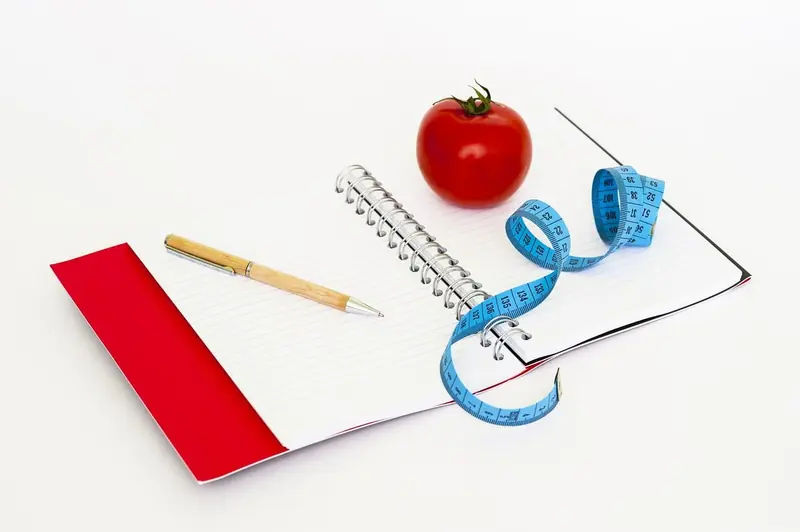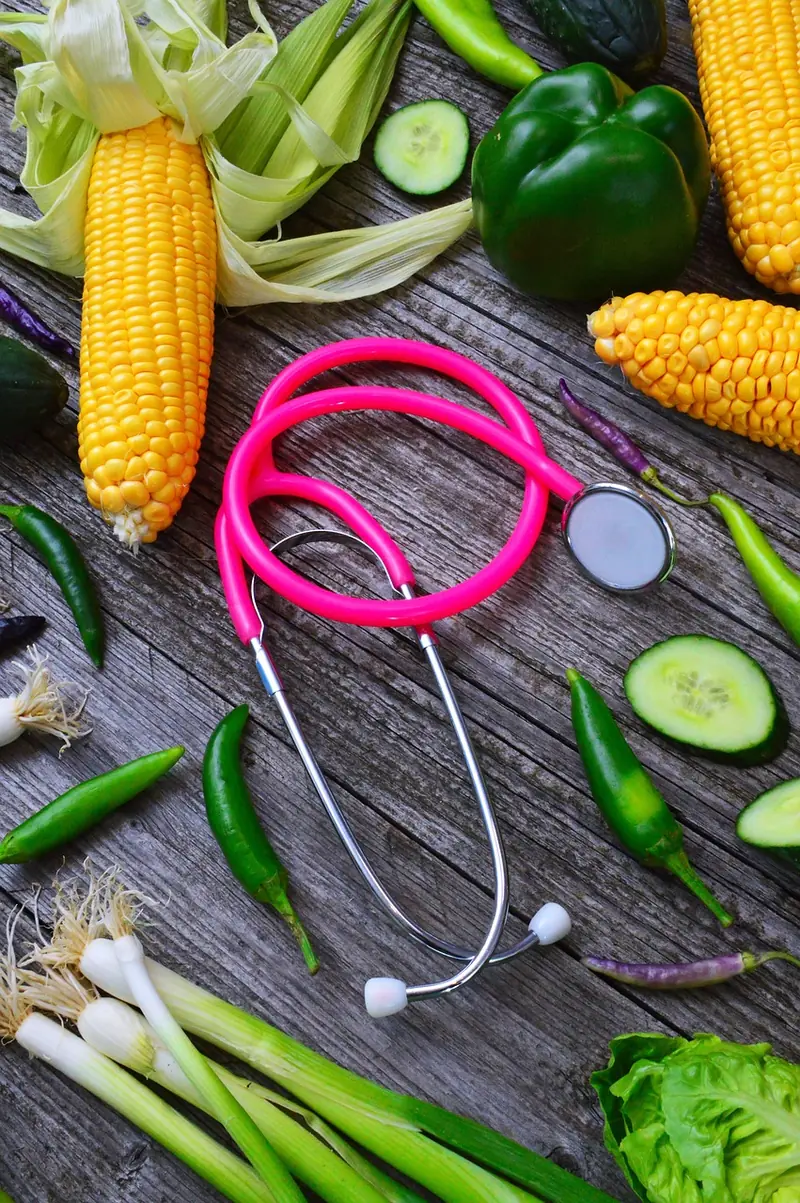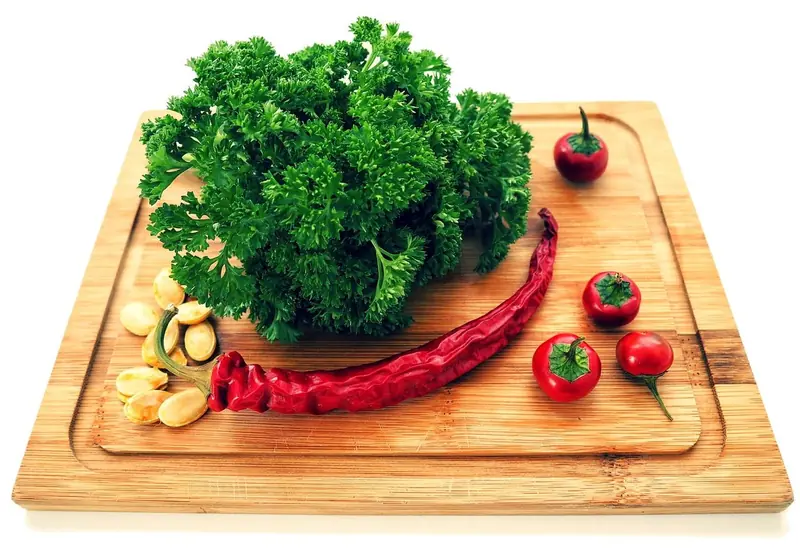
HouseWife delves into what it means to “burn fat,” how to curb appetite, and what to eat for weight loss.
When is weight considered excessive?
Excess weight is the difference between your actual weight and a standard measure: the body mass index (BMI). BMI is calculated by dividing your weight (in kilograms) by your height squared (in meters).
For example, if you weigh 65 kg and are 1 meter 70 centimeters tall (1.7 m), you first square 1.7 to get 2.89. Then, divide 65 by 2.89, which gives you 22.49. That’s your BMI. A BMI below 18 indicates underweight, a range from 19 to 25 is considered normal, 25-30 indicates overweight, and any number above 30 signifies obesity.

This calculation, based on the Quetelet formula, has been in use since the late 20th century. Before that, humanity relied on the Broca method: since the 19th century, the optimal weight was determined by subtracting a fixed coefficient from height in centimeters. For heights up to 165 cm, the coefficient was 100; for 175 cm, it was 105; and for heights above 175 cm, it was 110. So, for someone who is 166 cm tall, the normal weight would be considered 61 kg.
The next refinement of the normative weight formula took age into account. For those aged 20-30, the “ideal” weight was reduced by 11%, while for those over 50, it was increased by 6%.
Currently, the criteria for healthy weight are being reassessed again: new standards should consider body fat percentage and distribution, the ratio of muscle to fat, and gender differences in body composition.
Researchers from the Perelman School of Medicine (University of Pennsylvania, USA) suggest that the relationship between obesity and health is more complex than previously thought. Under certain conditions, excess weight may not be unhealthy, as it can prevent diseases; for instance, it has been found that some individuals with a higher BMI have a lower risk of cardiovascular diseases and a better metabolic profile than those with an ideal weight. Previously, obesity was unequivocally considered dangerous to health. Further research into the metabolic processes in overweight individuals is needed to explain this scientific phenomenon, with studies being conducted at the cellular level. However, the health risks associated with excess abdominal fat are indisputable.
What dangers do diets pose?
If you have health issues, losing weight through food restriction can be dangerous. Doctors advise against rapid weight loss and unbalanced diets. In a mono-diet (such as liquid, cheese, egg, or apple diets), the focus is on a single type of food, which deprives the body of essential nutrients. Eating large amounts of apples can cause heartburn, exacerbate gastritis, and lead to ulcers; a citrus diet can trigger allergies; a carrot diet may result in jaundice, while a protein diet can lead to colitis.
Only through gradual weight loss can metabolism adjust, and skin and muscles can tighten. For safe weight loss, it’s recommended to lose weight slowly, no more than 1-2 kg per month. If you lose 5-7 kg in the first two weeks, those pounds can quickly return, possibly with added weight. The temporary joy of a slimmer figure can be overshadowed by metabolic disorders and hormonal imbalances. Be prepared for liver and bile issues, bloating, diarrhea, dark circles under the eyes, and new wrinkles.
When a diet lasts more than five days, the body experiences a deficiency of water-soluble vitamins, leading to decreased vision, impaired enzyme function, nervous system issues, and sleep problems.
During fasting, the body suffers from a lack of calcium (due to reduced fat in dairy products, which prevents absorption of this micronutrient), and iron deficiency (found in meat products, which most diets severely restrict) can lead to anemia. Additionally, many diets promote increased fluid excretion, causing the kidneys to lose sodium and potassium, which can result in lethargy and cardiovascular insufficiency.
With a lack of nutrition, the body craves glucose: when carbohydrates are excluded from the diet, headaches and decreased brain activity occur. Along with cognitive function, work performance and mood decline. The quality of life diminishes with such weight loss. “Improper” diets are particularly dangerous for those prone to chronic diseases, which is the case in 80% of instances. Only fractional meals can save you from negative consequences and protect against uncontrollable hunger attacks that lead to setbacks and wasted weight loss efforts.

How is food prepared?
To lose weight, it’s essential to consider the specifics of digestion and understand the sequence of food absorption. The processing of food begins in the mouth, while digestion occurs in the stomach. Alcohol, water, water-soluble micronutrients, and simple sugars leave the stomach the fastest. The rest of the food, under the influence of hydrochloric acid, mucus, and enzymes from gastric juice, is transformed into chyme—a semi-liquid substance that will move further through the intestines. The processes of processing and absorption in the small intestine last about three hours, while the movement of undigested remnants in the large intestine, where dehydration continues, takes about fourteen hours.
Nutrients are absorbed at different rates: while liquids leave the stomach in a few minutes and carbohydrates within two hours, proteins take over three hours to process, and fats can take up to five hours. Nature cannot transform fats into proteins, but other wonders occur during the digestion process as needed by the body.
In the small intestine, proteins break down into amino acids, fats into fatty acids and glycerol, and carbohydrates become simple sugars: glucose, fructose, maltose, and galactose. The absorbed elements enter the bloodstream and lymphatic system, and from there, they reach the organs.
Amino acids from the liver are transported by the bloodstream to various tissues: these elements are used for muscle building and enzyme formation. When carbohydrates are deficient, amino acids convert into simple sugars and serve as an energy source; when in excess, they transform into fatty acids and are stored in adipose tissue.
Simple sugars are converted in the liver into glucose, which is either used as an energy source or stored in the liver and muscles as glycogen, serving as an “emergency reserve” of energy. Excess glucose becomes fatty acids, which are stored in adipose tissue. The fat reserves in the liver are converted into energy during periods of nutrient deficiency and increased physical activity.

How to burn fat?
When the number of calories consumed from food decreases, the body compensates for the energy deficit by burning subcutaneous fat. Physical activity enhances this process. During the first half-hour of exercise, the body uses glucose from the blood; after that, it begins to process fats. If you simultaneously reduce your caloric intake by just 200 kcal per day while exercising, you can lose 0.5 kg in a week. Special dietary supplements based on fat-burning products can help accelerate fat breakdown. The following substances act as catalysts in this process.
Oxygen
This oxidizer is considered the most powerful fat-burning accelerator, which is why outdoor exercise and active activities in nature facilitate easier weight loss compared to gym workouts. Fitness trainers recommend walking more and practicing breathing exercises. It’s important not only to intake oxygen but also to absorb it effectively. Iron helps with this (you should eat liver, meat, buckwheat, figs, apples, and kiwis): hemoglobin molecules are responsible for delivering oxygen to organs and tissues. For better iron absorption, consume animal products alongside plant-based foods. Your weight loss diet should include vegetables and fruits rich in vitamin C.
L-carnitine
This hybrid substance acts as a mediator between vitamins and enzymes. Its beneficial properties lie in regulating cell growth and providing energy to the body. L-carnitine increases appetite and endurance during energy expenditure, helping to lose weight through fat breakdown without depleting glucose. Athletes often use this capability to reduce weight before competitions.

Guarana, ephedrine, caffeine
Similar to adrenaline-containing medications, these catalysts increase energy expenditure from fat reserves, providing a boost of strength—speeding up metabolism and activating blood flow. However, long-term use of stimulants can harm the heart and nervous system, potentially triggering crises and heart attacks. By providing energy “on credit,” these substances exhaust the body, setting the stage for future fatigue.
To boost energy and burn fat, alongside exercise, it’s better to consume sweetened coffee with water in moderation (as this drink dehydrates the body), green tea, ginger, and spicy seasonings. You cannot lose weight without considering energy balance. When calories are deficient in “starvation” diets, combined with excessive physical and mental stress, the body will switch to “energy-saving mode,” shifting from fat breakdown to muscle depletion and glycogen processing. Therefore, rapid weight loss is often more harmful than helpful.
Foods for weight loss
You can safely shed excess weight by incorporating the right components into your diet.
Baking soda
In an acidic body, metabolic processes slow down, and oxygen absorption worsens. Baking soda neutralizes excess acidity. For preventive purposes, it is taken in the morning on an empty stomach: half a teaspoon in a glass of hot water or milk. Baking soda helps restore acid-base balance, eases kidney function, enhances the activity of B vitamins, and increases protein and lymphocyte levels.
Whey
This byproduct of cheese production is created during the heating of sour milk, separating a liquid rich in vitamins and minerals. Whey helps eliminate toxins from the body, acting as a laxative. This beneficial fraction for weight loss can be consumed without restrictions.
Cucumber
This dietary vegetable contains only 15 kcal per 100 g. Composed of 95% water, cucumbers quickly flush out toxins and improve well-being, aiding in weight loss. Rapid weight loss is facilitated by tartaric acid, which prevents carbohydrates from converting into fats. Cucumbers are rich in vitamins B, A, C, P, phosphorus, magnesium, iodine, calcium, iron, and fiber, which enhances intestinal peristalsis and positively affects digestion. They also contain enzymes that aid in the absorption of animal proteins, which is why cucumbers are often paired with meat products. Regular consumption of cucumbers can help eliminate stones in the gallbladder and bile ducts. This vegetable has a diuretic effect and helps reduce swelling. Doctors recommend cucumbers for individuals suffering from kidney and liver diseases, cardiovascular and nervous system disorders, gout, and obesity.

Tomato
Tomatoes and tomato juice have a caloric content of 25 and 20 kcal per 100 g, respectively. Tomatoes can reduce feelings of hunger, quickly satiate the body, and positively influence metabolic processes. Those wishing to lose weight can use tomatoes for detox days, during which they should drink a liter of fresh tomato juice or consume up to 2 kg of ripe tomatoes daily. Contraindications for consuming canned tomatoes include cardiovascular diseases, kidney issues, or hypertension. People suffering from gallstones, gastritis with high acidity, and stomach ulcers should consume tomatoes with caution. Tomato juice should not be drunk on an empty stomach.
Zucchini
There are only 23 calories in 100 g of zucchini. Composed of 94% water and virtually fat-free, they are considered an excellent dietary product. Zucchini is rich in vitamins C, B1, B2, and carotene. These fruits contain molybdenum, zinc, lithium, aluminum, calcium, potassium, phosphorus, iron, sulfur, and magnesium. The ideal potassium-to-sodium ratio (150:1) ensures water-salt balance for eliminating excess fluid from the body. The high fiber content in zucchini promotes improved digestion and metabolism. Due to their easy digestibility, zucchini is recommended for children’s nutrition, detox days, diabetic diets, and gastrointestinal tract diseases. The vegetable can be consumed with the skin.
Corn
The “queen of fields” is rich in carbohydrates, calcium, magnesium, iron, phosphorus, nickel, copper, potassium, and vitamins B, A, E, and PP. Corn kernels contain the amino acids tryptophan and lysine, which the body cannot synthesize on its own (they regulate cholesterol levels in the blood, keep muscles toned, have a choleretic effect, and prevent fermentation processes in the intestines). Corn is beneficial for diabetics as it stabilizes blood sugar levels and helps with anemia, metabolic disorders, anorexia, and obesity. Nutritionists value corn for its ability to eliminate “bad” cholesterol and burn fat. Additionally, corn prevents the accumulation of new fats by breaking them down in the food that enters the digestive tract. In dietary nutrition, it’s better to consume boiled corn, as it is less nutritious than canned corn.
What should you eat to lose weight?
When the body becomes accustomed to overeating, reducing food intake can be painful: feelings of hunger will be triggered by stomach acid released by “programmed” enzymes. Another reason for excessive appetite is unbalanced nutrition. A deficiency of certain vitamins and minerals can distort taste and create a constant feeling of hunger, despite a heavy stomach.
A herbal blend—so-called phytotea—can help break food dependency. Parsley, barley, celery, mint, and other greens can aid in weight loss. The method of losing weight through herbs is called phytoloss. This is not a quick process: herbs need to be brewed and consumed over several months. Over time, the stretched stomach will shrink in size, and the body will develop healthier eating habits.
Green tea
This herbal infusion can be consumed in any diet: it enriches the body with vitamins and tricks the feeling of hunger.
Parsley with company
To reduce stomach acid production, brew a teaspoon of dried parsley with a glass of water and drink it when feeling hungry. A more effective decoction can be made with fennel, anise, flaxseed, and dill. Add these plants to the drink.

Mix and match components
Phytoloss will be more effective if you combine and alternate different plants. Decoctions can be made from currant leaves, mint, rose hips, and hawthorn. Drink them together or in rotation. Such phytotea can serve as a base drink for detox days. Completely abstain from food in favor of phytotea and fresh juices (one detox day per week is sufficient for weight loss).
How to reduce appetite?
For weight loss, it’s important to include foods that reduce the need for food in your diet. It has been proven that a “wolf” appetite is not necessarily linked to physical activity. According to a study at Brigham Young University (USA), intense hour-long physical activity does not increase appetite; on the contrary, it decreases it. The dulling of hunger in subjects was evidenced by a weakened nerve response to appetizing images after physical activity, along with an increase in activity levels. The researchers concluded that exercise not only burns fat but also “saves” calories by regulating appetite and preventing overeating.
Yoga diet
Performing asanas is equally effective as dynamic exercises. The rules of the yoga diet are to eat less and drink more. In the yoga diet, small portions are practiced, and eating while standing is prohibited. Upon waking, slowly drink a cup of warm water with lemon juice through a straw over half an hour. This drink suppresses appetite and cleanses the blood, intestines, and liver.
For rapid weight loss and cleansing of the stomach and skin, the yoga diet suggests consuming only the following products for 40 days: for four portions—one pack of low-fat cottage cheese, 4 zucchinis, 4 stalks of celery, and a sprig of mint and parsley. Steam the zucchinis and celery (until soft) and blend them into a puree, adding parsley, mint, and coarsely ground black pepper. Serve the dish with low-fat cottage cheese.

Leafy vegetables
All types of cabbage, spinach, and celery reduce appetite. This is because the body expends a lot of energy to digest them. Prolonged processing makes quick absorption impossible, dulls hunger, and does not threaten weight gain.
Pine nuts
The body’s reaction to fatty acids is the production of cholecystokinin—a hormone responsible for satiety and appetite. Pine nuts contain so many fatty acids that they can satisfy hunger for a long time.
Olive oil
This dietary product quickly calms appetite due to its fatty acids.
Hot food
Heated food, especially hot soup, influences the brain with its aroma, creating an illusion of fullness. Cooked dishes provide more energy than all the raw ingredients they contain. Scientists have proven that thermally processed food contains more calories than raw food. In times of food scarcity, processing food became a prerequisite for human survival, researchers conclude, but today we no longer need as much energy to sustain life, so it makes sense to reduce processing and shift towards raw food diets.

Correct weight loss plan
Overeating and a sedentary lifestyle are not the only enemies of a healthy figure. Often, the cause of excess weight lies within the body.
Hypothyroidism
Improving nutrition will not yield results with low levels of thyroid hormones. While this occurs in one in a thousand men, hypothyroidism is diagnosed nearly 20 times more often in women. The blockage of thyroid hormone production slows metabolism, leading to gradual weight gain. This condition is caused by a deficiency of iodine or a lack of progesterone in the body.
Digestive issues
The second hidden reason is sluggish gastrointestinal tract function, which prevents the body from producing the necessary enzymes for digestion and nutrient absorption. The result of such a disorder is weight gain.
Fluid retention
Another possible cause of excess weight could be kidney dysfunction. Due to water retention in the body, doctors often require such patients to completely eliminate salt from their diet and prescribe diuretics with compensators to prevent the loss of essential nutrients. The daily salt intake for healthy individuals is up to 15 g, while with unhealthy products, we usually consume three times more.
Chromium deficiency
Chromium acts as a regulator of fat metabolism in the body (this invisible element also helps lower “bad” cholesterol levels and protects blood vessels from hardening). As soon as chromium levels drop, unused glucose converts to fat, causing weight gain without any change in activity or diet. In such cases, a dietitian can determine the cause of weight gain through laboratory analysis.
Thus, the rules for weight loss and dietary norms are individual for each of us. While some may maintain a healthy weight with minor dietary changes, others may require professional assistance to prepare for the swimming season. A comprehensive approach to weight loss involves a combination of an appropriate diet, physical exercise, and medical therapy.
